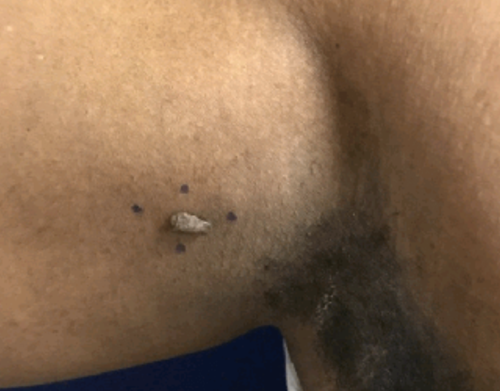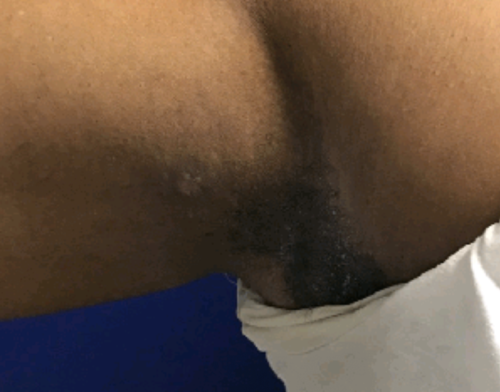Skin Tags Overview
Males and females can both experience skin tags, which are benign growths that grow on the skin and are soft to the touch. They can be described as growths that hang from the skin like small balloons.
Also known as acrochordon, skin tags can appear in large numbers on some patients with some people having hundreds of tags on their bodies. Tags can be flesh-colored or darker and arise from the skin from a stalk. Skin tags can be found anywhere on the skin, but are common on the: neck, armpits, eyelids, breast crease, and groin and buttocks folds. They tend to grow where there’s friction, such as where the skin rubs against itself or clothing. Ashburn, VA cosmetic surgeon, Dr. Timothy Mountcastle, uses a variety of methods to remove and treat skin tags all over the body.
Skin Tag Before and After*
See More ResultsSurgical Technique
There are several treatment options for removing skin tags. With cauterization, heat is used to burn off the skin tag. In cryosurgery, liquid nitrogen is used to freeze off the skin tag. Ligation cuts off the blood supply to the skin tag through tying the tag off tightly. Once the blood supply has been cut, the tag will wither away and fall off. With excision, the skin tag will be cut out with a scalpel.
During/After Surgery
Skin tag treatments are considered outpatient and are usually performed right in the office. Local anesthesia can be used on the area prior to surgical excision to minimize discomfort. Treatment time can vary based on the technique and the patient’s condition. The recovery period should be minimal, along with minimal downtime. Removed tags shouldn’t reoccur. If they do, it’s best to seek treatment from the doctor again.
Skin Tag Videos
Video GallerySkin Tags Faqs
Does removing skin tags cause more to grow?
No, there’s no evidence to support that more skin tags will grow after they have been previously removed. Some people just seem to be more prone to skin tags.
Can I remove skin tags myself?
It’s not recommendable that patients remove their own tags since there’s the risk of bleeding and infection. It’s also important to confirm whether the growth is an actual skin tag and not something more serious.
Does insurance cover the cost?
Most insurance carriers classify skin tag removal as a cosmetic procedure and will not cover the cost. There are times when removing a skin tag is a medical necessity and a portion of the cost might be covered by insurance. We encourage patients to contact their provider ahead of time to get an accurate breakdown.
Financing Available
Financing InfoRequest An Appointment
Contact Us

